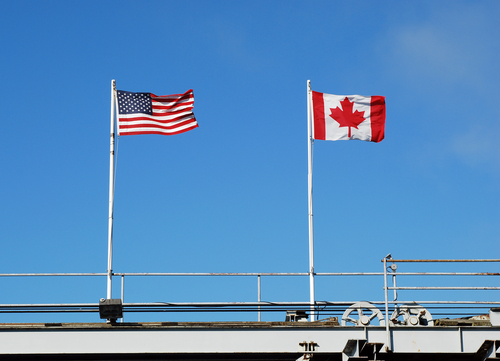
A legislative effort to create a Northern Border Coordination Center and another to support critical operations at airports, seaports and land ports of entry through onboarding of at least 600 officers a year moved out of committee this week and to the Senate floor.
The Northern Border Coordination Act, a bill to require the Department of Homeland Security to collocate the aforementioned center within an existing U.S. Border Patrol sector headquarters, Air and Marine Operations Branch, a U.S. Coast Guard air station and more. Its role would be to aid implementation of a northern border strategy, track security metrics, train DHS personnel and test new border security technologies, as well as to address threats posed by illegal cross-border drone activity.
A second bill, the Securing America’s Ports of Entry Act, sought additional Customs and Border Protection (CBP) officers per year until the agency’s staffing needs are deemed adequate. On top of the official up to 600 officers per year, it would also authorize hiring extra support staff to take some of the burden off CBP officers to pursue the law enforcement and security side of their duties.
“The federal government must ensure the needs of the Northern Border are met and that DHS personnel have what they need to effectively secure the Northern Border,” U.S. Sen. Gary Peters (D-MI), a co-author of both bills and chair of the Senate Homeland Security and Governmental Affairs Committee, which presided over both bills, said. “Selfridge Air National Guard Base already houses a number of DHS missions and this Center will work hand-in-hand with existing resources and capabilities, allowing the Department to further enhance efforts to ensure that the Northern Border’s security needs remain a priority.”
According to data from Peters and CBP, the agency processed more than 300 million travelers at ports of entry and oversaw the highest volume and value of trade on record. Additional officers would mean more support at border crossings and other ports of entry, as well as greater oversight of international commerce. The northern border with Canada, which consists of 5,500 miles of terrain, is currently managed by less than 2,000 agents, according to Hector Garza, national vice president and legislative chair of the National Border Patrol Council.
“To say that they are stretched thin is an understatement,” Garza said. “It is essential that Border Patrol, Office of Field Operations, Air Marine Operations, and other federal and state agencies coordinate their activities. This legislation will require the Department of Homeland Security to do just that.”




